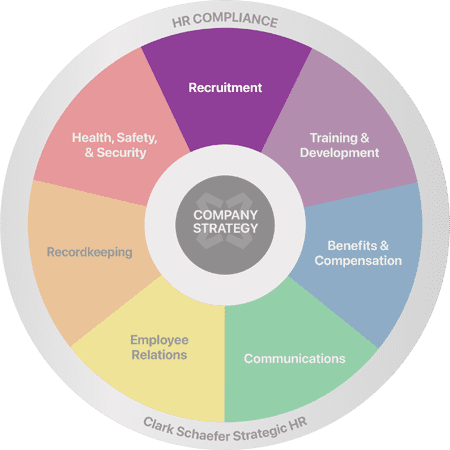Hiring on a Shoestring Budget
Last Updated on September 3, 2019 / Recruitment
Have you heard it’s a candidate’s job market? According to the Bureau of Labor Statistics, the U.S. unemployment rate (currently 3.7%) is the lowest it has been in 50 years. Many companies are struggling to find the right talent to fill their open positions. For talent acquisition professionals, this problem is further exacerbated by working with small or decreasing recruiting budgets. As you navigate through stressful recruiting times, it’s important to look at new ways to ease your recruiting pain as well as to be reminded of the tried and true low-cost recruiting tactics that can help you to attract great talent.
Job Posting Strategy
Choose your job posting resources carefully and spend your job posting dollars wisely. Job posting costs can vary dramatically from source to source from being free to costing several hundred dollars per posting. Keep in mind that some posting resources are better for certain job types more than others. Do your research before posting! Below are a few job posting ideas that stretch beyond typical job boards.
- Programmatic Job Advertising – As defined by AppCast, “Programmatic advertising is the buying, placement, and optimization of ads performed by software, rather than people. It allows advertisers to target their ideal demographic across the web, and keeps them from overspending on clicks that don’t convert with automated bidding processes.” Some companies have found this approach to be an effective, lower cost way to generate better, on-target applicants. Learn more from AppCast’s article, “What is Programmatic Job Advertising?”
- Job Seeker Support Groups – It is typically free to send your job openings to job seeker support groups. Consider attending these meetings to develop relationships with all types of job seekers and to position yourself at the top of their minds as an employment resource, in addition to emailing your job opportunities for distribution.
- Google for Jobs – This has become a game changer for job seekers because they don’t have to go to a specific source to look for jobs, rather they can simply find jobs through organic Google searches. The key for employers is to ensure that your jobs are being indexed on Google for Jobs; otherwise you risk missing out on millions of job seekers. If you don’t see your jobs on Google, here’s how to get started.
Expand Your Sourcing Resources
Given the long stretch of low unemployment we’ve experienced in the U.S. over the last couple of years, recruiters have learned that we simply cannot rely on incoming applications as a primary source of filling positions. Rather, we must take a proactive approach to source candidates. Then we put on our recruitment marketing hats to work to persuade them to consider new opportunities.
So, where do you look for potential candidates? In addition to pursuing the “typical” sources such as LinkedIn and professional associations, consider putting the following under-utilized and internal options on your list.
Source Targeted and/or Internal Candidate Pools Including:
- Veterans – This is a great pool of individuals with extensive training in leadership and technology, strong work ethic, ability to follow procedures, and are adept at working in diverse groups. Learn more from the Career One-stop Business Center about hiring vets and how you might be eligible for a tax credit for hiring a veteran.
- Retired Workers – Particularly those who have retired early may find that retirement isn’t all that it’s cracked up to be, and they are still looking for life fulfillment and/or supplemental income.
- Company Alumni/Boomerang Employees – Stay in touch with employees who have moved on from your company. Sometimes the grass isn’t always greener on the other side, and they are flattered when you reach out to them to spark an interest in coming back. Plus, they’re already familiar with your company culture and the nature of your business, so they can hit the ground running if hired again.
- Employee Referrals – Leverage your employees’ connections and provide incentives for them to share referrals. Let them know they don’t have to “sell” the job opportunities, rather if they can provide the names and contact info of viable candidates, you’ll take care of engaging the referrals.
- Stay-at-Home Parents – This can be a great pool of candidates for part-time positions that can occur during the school day, job-sharing, or at-home work opportunities.
- Ex-offenders – This is a segment of the population that deserves a second look and a second chance. More companies are hiring ex-offenders as part of their inclusion strategies, in addition to enjoying the financial benefits such as the Work Opportunity Tax Credit and Federal Bonding Program as described in this CNBC article, “Why Companies are turning to ex-cons to fill slots for workers.”
- Search Resume Databanks – There are several resume databanks you can use to find the right talent to fill your jobs; some are free, and some are low cost. Don’t forget about your local or state workforce development system resources as well. For example, OhioMeansJobs.com, in partnership with Monster.com, provides a free resource for Ohio companies to post jobs and search resumes. At the end of August, they plan to launch enhanced search capabilities leveraging Monster’s proprietary technology, so don’t miss out!
- Your Applicant Tracking System – Don’t forget this excellent resource of candidates who’ve expressed interest in your company in the past. Never underestimate the value of this resource! Stay in touch or reach back out to “silver medalist” candidates who maybe weren’t a fit for a role in the past but could be a great fit now.
- Consider Growing from Within – Look among your current staff for viable candidates. Is there anyone for whom your job opening could be a smart career development or promotion opportunity? Showing that you’re willing to help with your employees’ professional growth can also be an effective retention tool.
Shine a Light on Your Company Culture, Branding, and Careers
Examine your company’s culture and employment brand, employment marketing, recruitment processes, and work environments. There may be moments of opportunity where you could make small changes resulting in a big impact.
Employment Branding
Your employment brand reflects who you are and what it’s like to work at your company. It is more than the message that you outwardly present, but it’s also the message that comes from your employees about their experiences in working at your company. You want to leverage what makes you unique and communicate what makes your organization a great place to work. At the same time, you must be authentic. Perception must match reality. Job seekers will research reviews about your company and are far more likely to believe comments from your employees versus slick marketing messages that come directly from your organization. To learn what leaders in recruitment marketing and employment branding are doing, check out the Smashfly Transform 2019 Action Guide.
Social Media
Social media has changed the way we interact with others, socialize, and now how we find talent. It’s critical for recruitment professionals to network and build relationships, and social media provides an easy avenue to do this. It can also save valuable time and resources when used effectively in your recruiting process.
According to a recent SHRM survey studying the use of social media in talent acquisition, they identified the effectiveness of social media marketing in decreasing the time to fill various positions:
- 71% effective for non-management, salaried positions
- 67% effective for management positions (director/manager level)
- 59% effective for executive / upper management (c-suite)
- 53% effective for non-management / hourly workers
Although it’s certainly not the only game in town, LinkedIn comes to mind as the leading social media platform for professionals. We recommend reviewing your company’s LinkedIn content, use, and effectiveness. If you haven’t updated your LinkedIn profile, there’s no better time than the present. Candidates actively research companies and recruiters prior to applying for a position, so be sure you’re putting your best foot forward. Also, consider posting your job openings in your company LinkedIn updates, and encourage employees to share your jobs with their networks.
Careers Page
Make sure that your careers page is showcasing not only your current job opportunities, but also tells the story of what it’s like to work for your company. Adding short videos to hear from employees and hiring managers is becoming a compelling way to share your company’s story. If your company doesn’t have a careers page, now is the time to create it! To learn more, check out our tips for effective career page development.
Candidate Communication
Set yourself apart with effective candidate communication and feedback. You’ve heard about the importance of providing an exceptional candidate experience, and effective communication is a critical component. There’s no need to overcomplicate this – bottom line, be responsive, be positive, be timely, and respond through effective means. For some candidates, communicating through email or social media messages works well. For others, text messaging is more effective. You can also consider using AI chatbots to help ensure timely responses, especially to easily answered yet frequently asked questions.
Flexible Work Environments
The early bird may get the worm, but the right work environment will get the candidates! Sometimes the smallest of concessions on your part make a world of difference to a job seeker. Consider if offering a part-time schedule, job-sharing, or remote work opportunity could help to fill your open positions.
Manage Hiring Manager Expectations
As recruiters, we know the hiring manager wants the position filled “yesterday.” A critical first step in your process should be to set expectations with the hiring manager. Get a clear understanding of the role and a short list of “must have” qualifications. This will help immensely in your screening and sourcing process. Also, educate the hiring manager on the state of your labor pool. They need to understand the current supply/demand ratio of job seekers to jobs to fully appreciate the need to move quickly and be responsive with you and candidates.
Time for Action!
We’ve provided several ideas on how to positively impact your hiring process with limited financial resources, so now it’s up to you to determine what is most important for you? Assess your priorities of where and how you want to spend your time and recruiting dollars and go for it!
Thank you to Melinda Canino, MS, CIR and Melissa Dern, CIR with Strategic HR for sharing their insights and findings on recruiting on a shoe string budget. If you have any questions or would like to share your comments, contact us at info@strategicHRinc.com.




